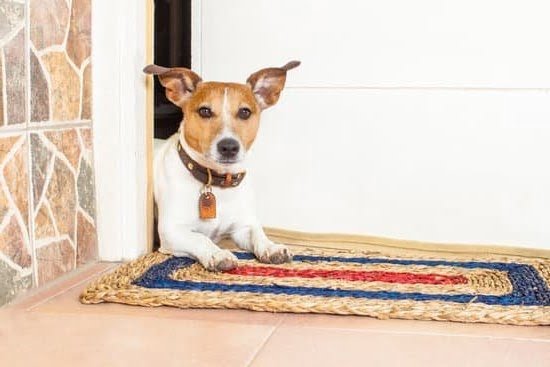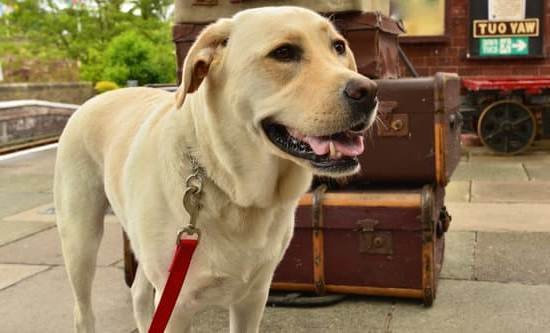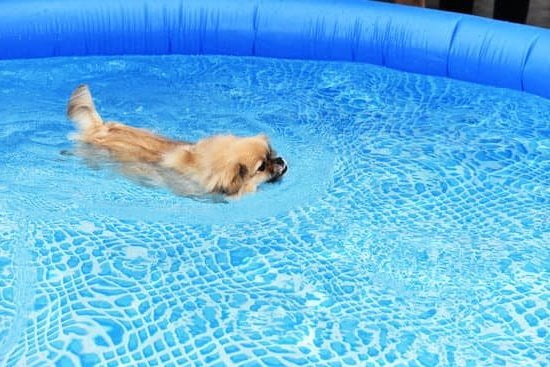Introduction
Leash training is an important part of owning a dog. It can help keep your pet and others safe, as well as provide you more control when out in public. With proper training, your dog will stay calm, focused and obey commands while on the leash. The benefits of leash training include better safety while walking, which reduces the possibility of running away or getting lost, teaching proper canine etiquette around other dogs and people, fewer distractions when walked in public places, and making it easier to handle your dog in public spaces.
When beginning the leash training process, it is best to get your pet used to the idea of being attached to a leash before actually taking them out for a walk. Start by introducing them to the idea of the collar and leash using treats or playtime. Once they’ve learned that wearing a collar does not have negative associations associated with it (such as fear or pain), you should practice walking without going too far from home. This should also be done in an enclosed space such as in the backyard or a nearby park until your pup gets comfortable with wearing a collar and following basic commands without pulling on their leash constantly. You should also use rewards to encourage good behavior during these early walks.
Once your pup appears comfortable with the idea of being connected to a leash while following basic commands, start taking short trips around town looking for less chaotic places where they won’t easily get distracted by other animals or people. Continue rewarding good behavior during this stage and try not to lose patience if they seem overly excited when meeting new animals or people – instead calmly redirect them back towards focusing on walking next to you while giving reward incentives along the way! Finally once they build up enough confidence in their walks be sure to take them somewhere crowded every now and then so they can gather experience managing complex situations autonomously with minimal guidance from you – but still offering rewards each time they do things right!
Prepping for Training
Before beginning leash training, it is important to ensure that you have the right supplies. You should get a harness or head collar that fits your dog snugly but comfortably. It should not be too tight and not too loose so consider getting professional advice on sizing if needed. Make sure the leash you use is strong and won’t break under strain from your pup. Finally, treats to reward your pup will be essential for positive reinforcement and luring them into behaviors. Make sure you have an abundance of treats on hand for successful training sessions!
Establish a Positive Environment
Establishing a positive environment is the first step in leash training a dog that pulls. Positive reinforcement methods such as clicker and treat-based rewards are essential during the training process to ensure success. It’s important to understand the principles of reward-based training when attempting to leash train your dog. Providing your pet with verbal praise and/or treats after they successfully complete a task will help reinforce good behavior. Additionally, make sure to be consistent with how often rewards are given out so that your pet can learn how to successfully respond in different scenarios. With consistency, patience, and understanding of reward-based systems, any dog can be successfully leash trained.
Train in the Comfort of Home
Leash training a dog who pulls can be a challenge, but by starting off in the comfort of your own home, you’ll be able to make sure that the fundamentals of good leash behavior are established. Begin by introducing your dog to the leash; start slow and simple, allowing them to become accustomed to wearing it and rewarding them for any positive behaviors. Once they have become familiar with the leash, start guiding them around your house or yard with commands such as “heel” or “look at me” while making sure that they don’t pull ahead. If they do begin pulling, stop and remain still until the leash is relaxed again; provide verbal praise when this happens. The goal is to only move forward once your pup relaxes their tension on the leash. Repeat this inside your home before attempting it outside, as there will be more distractions outdoors. Additionally, reinforce good walking habits by giving plenty of treats and rewards throughout each training session!
Introducing the Collar and Leash
It is important to make sure your pup is comfortable wearing the collar and leash before actually beginning the leash training. This can be done by simply having the pup wear the collar when you are in the house. You can also attach a light toy to the leash so that it does not drag on the ground, although not necessary for every pup. Start by getting your dog used to having their collar grabbed and slowly put it on them while giving them positive reinforcement like verbal cues or treats. Make sure to ensure your pup is not frightened or uncomfortable while doing this and take breaks if they seem uneasy with it. Once they are comfortable with just having their collar and leash on, you can start taking small walks outside at first in a low-distraction area such as your backyard or an empty sidewalk.
Start the Training Process
When leash training a dog that pulls, it is important to be patient and consistent with your efforts. Begin by equipping yourself with the appropriate equipment: a leash and collar that fits your pup properly and comfortably. Once you have the necessary items, familiarize yourself with the steps for training, taking your time to ensure you understand each instruction before attempting it:
1. Start at home – Before going out onto public sidewalks or paths, practice in an enclosed space such as your backyard or living room. This will help contain your pup and make it easier to focus on your instruction without distractions.
2. Positive reinforcement – Make sure to reward good behaviors such as walking at your side or paying attention while on walks with treats and praise. Let them know they’re doing well!
3. Redirection – If your pup begins pulling ahead of you, calmly redirect their focus back toward you using positive commands like “come”, or “here”, followed by lots of praise when they obey the command.
4. Establish boundaries – When appropriate, set some firm boundaries with regards to behavior on walks including having respect for other people, animals and property along the way by avoiding distractions like loud noises or unfamiliar people/animals.
5. Leash corrections – If necessary, lightly correct bad behaviors such as pulling ahead on the leash by giving a short tug in order to remind them of the desired behavior on the walk. Be sure not to correct too harshly as this could have adverse effects.
Practice and Maintain Focus in Every Session
In order to properly leash train a dog that pulls, it is important to practice and maintain focus in every training session. First, be sure to introduce the leash slowly and calmly. Have your dog wear the leash for short periods of time inside the house before going outside on walks. Make sure you hand-hold the leash so your dog gets used to it being around their body, not tugging or pulling against them. During walks, start off slowly going shorter distances and offering rewards when they walk beside you without pulling on the leash. Encourage them with words of praise whenever they show signs of progress. Regularly practicing these steps during walking sessions will help establish positive behaviors that will stay with them in time. Additionally, if any negative behaviors occur during the training sessions, take a break between each session and remind yourself that consistent practice will lead to successful results.
Remain Consistent, Track Progress, and Encourage Great Results
Leash training a dog can be tedious, but consistent effort and patience will go a long way. To begin, gradually introduce your dog to the leash by having them wear it while they are inside the house, slowly extending the amount of time they wear it. As they become more comfortable with wearing the leash, start taking them on short walks around your neighborhood. Ensure that you keep consistent when establishing commands and rules to follow during these walks – each time you take your pup out, remind them of the same instructions. Additionally, you should reward good behaviors in order to create positive reinforcement. During the walks, if your pup starts to pull on their leash too hard or get distracted ease up on the tension and redirect their attention with soft verbal cues or treats. Tracking progress is also important for encouraging great results as you can review behaviors from past walks and note improvement in each of your pup’s sessions. With enough practice and positive reinforcement your pup will soon understand that walking next to you is much more rewarding than tugging ahead; making for enjoyable experiences outside together!
Troubleshoot and Address Potential Obstacles
Leash training a dog who pulls can be a frustrating process, usually because the dog is uncomfortable with something or because they are trying to go somewhere. It’s important to take the time to address potential obstacles if you want your dog to stop pulling on their leash. Some of the most common problems you may encounter while leash training a dog that pulls include:
• Pain: Dogs may pull on their leash as an avoidance tactic if they are in pain. In this case, it’s important to check for any signs of physical discomfort and consult your vet if necessary.
• Fear or Anxiety: If your dog is scared or anxious, they may pull on the leash in an effort to escape from whatever is causing them distress. In this case, providing ample positive reinforcement can be helpful when introducing them to new scenarios and have them learn there’s no reason to be afraid.
• Adrenaline Rush: Some dogs can get so excited that they lose control when let off-leash, which results in excessive pulling on the lead when attempting to do so again. Training methods such as heeling and rewarding calm behavior can help reduce this type of unwanted behavior.
Overall, being mindful of potential obstacles displayed by your pup while training them can help make the process easier and allow you both to become more comfortable while out and about together!
Conclusion
Leash training a dog that pulls is an arduous task but with the right steps it can be completed effectively. The key to success is patience and consistency when leash training, as it may take some time for the dog to adopt new behaviors. There are several techniques that can be employed during leash training such as providing positive reinforcement, rewarding calm behavior, and remaining alert to signs of negative behavior. Above all else remember that leash training is a process, so don’t expect immediate results and keep at it until you’ve seen improvement in your pup’s behavior. Taking the necessary steps towards leash training your dog will bring about lasting harmony between you two and create a lifetime bond you can enjoy when out on walks or just spending time together. With consistent practice and gentle guidance,you will both develop a better understanding of each other that rewards both human and canine in ways some cannot imagine. The reward by far outweighs the effort you put into this long but fulfilling journey of teaching your pup how to remain calm on his or her leash.

Welcome to the blog! I am a professional dog trainer and have been working with dogs for many years. In this blog, I will be discussing various topics related to dog training, including tips, tricks, and advice. I hope you find this information helpful and informative. Thanks for reading!





